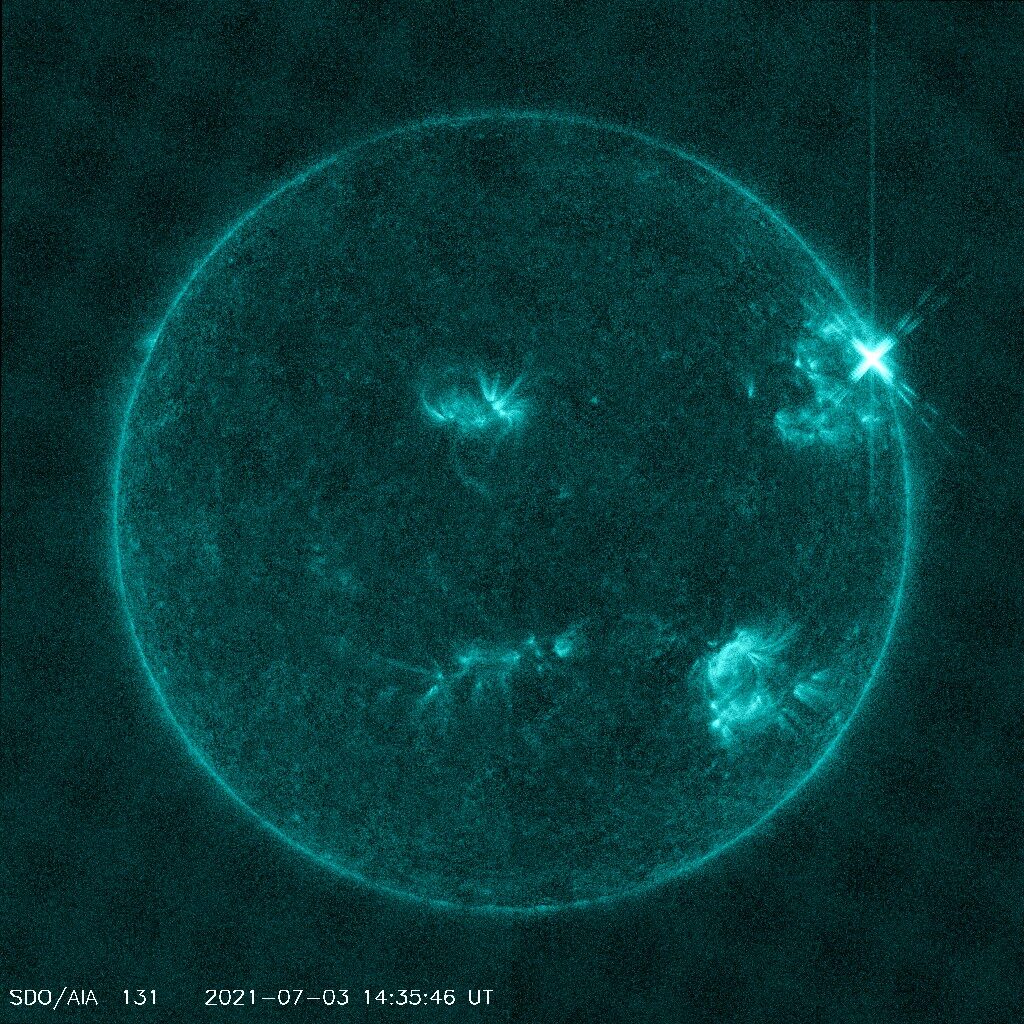
Today's explosion registered X1.5 on the Richter Scale of Solar Flares
CME IMPACT POSSIBLE THIS WEEKENDA minor coronal mass ejection (CME) is expected to hit Earth this weekend. It left the sun on June 29th, propelled toward us by
a B7-class solar flare.
The impact will probably be too weak to cause a geomagnetic storm, but high-latitude auroras are possible on July 3rd or 4th.
Aurora alerts:
SMS Text.
FIRST X-FLARE IN 4 YEARSA new sunspot emerged during the early hours of July 3rd and promptly exploded, producing the first X-class solar flare since Sept. 2017. NASA's Solar Dynamics Observatory recorded the extreme ultraviolet flash:
Today's explosion registered X1.5 on the
Richter Scale of Solar Flares
A pulse of X-rays briefly ionized the top of Earth's atmosphere, causing a shortwave radio blackout over the Atlantic Ocean:
blackout map. Mariners, aviators, and amateur radio operators may have noticed unusual propagation effects below 30 MHz just after 1429 UT
The source of this flare is an un-numbered sunspot now growing near the sun's northwestern limb. Yesterday it did not even exist, highlighting the unpredictability of solar activity. More flares may be in the offing, so stay tuned.
Solar flare alerts:
SMS Text.
Comment: See also: A warning from history: The Carrington event was not unique